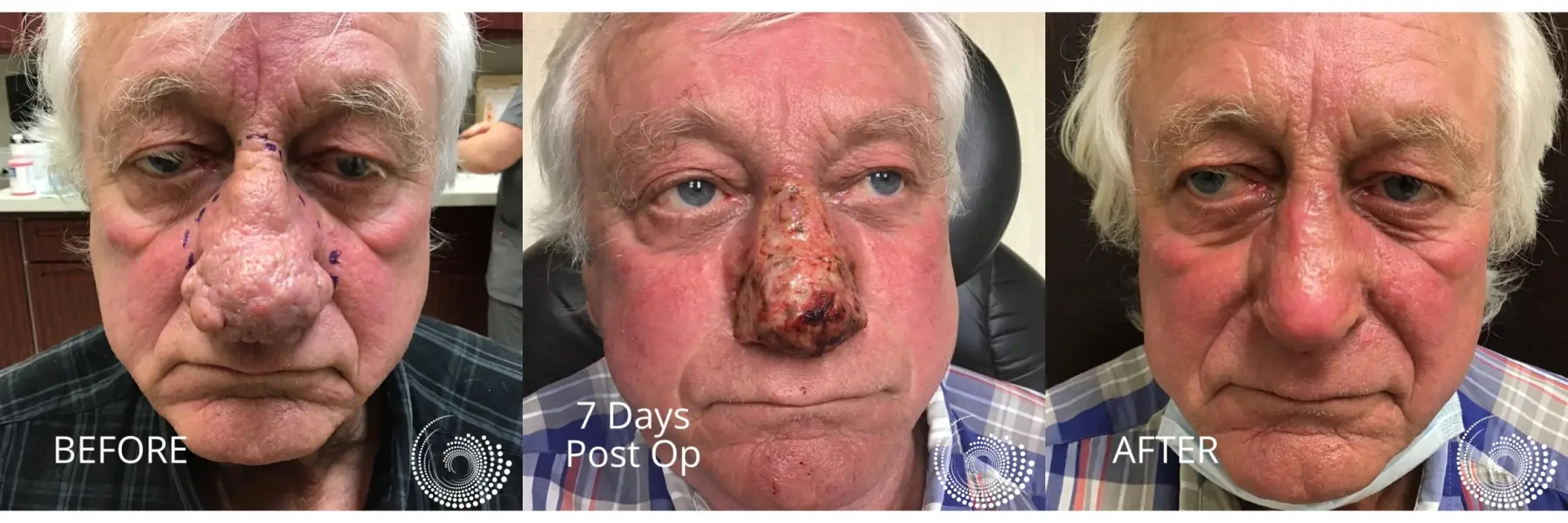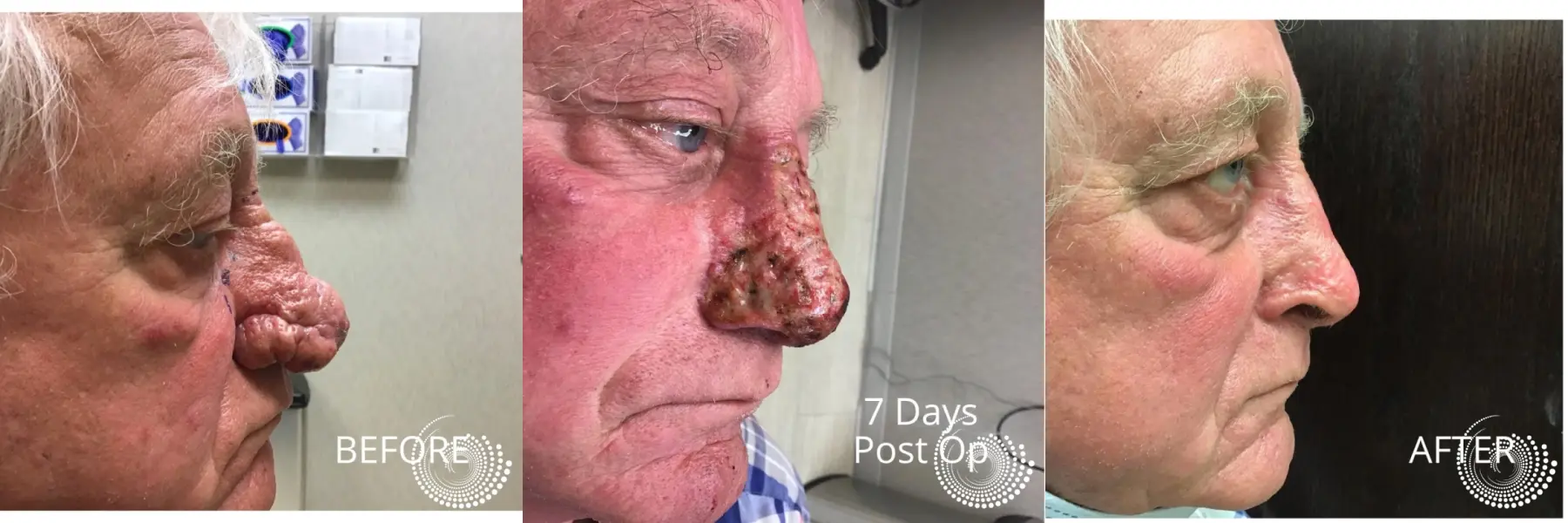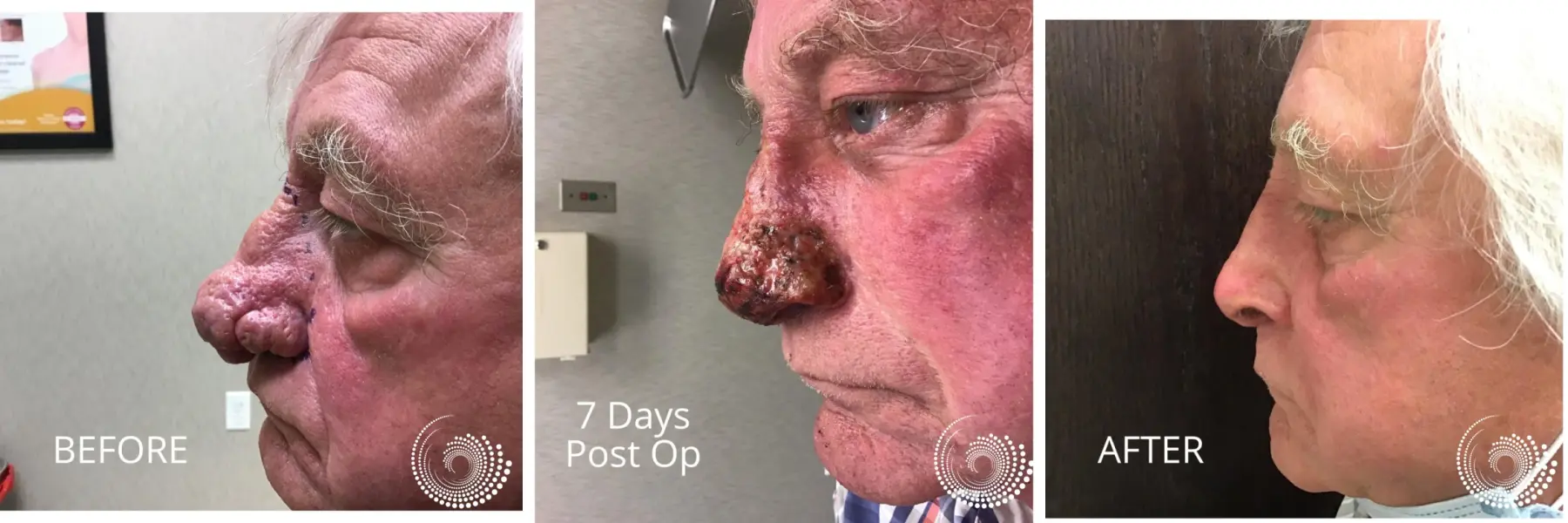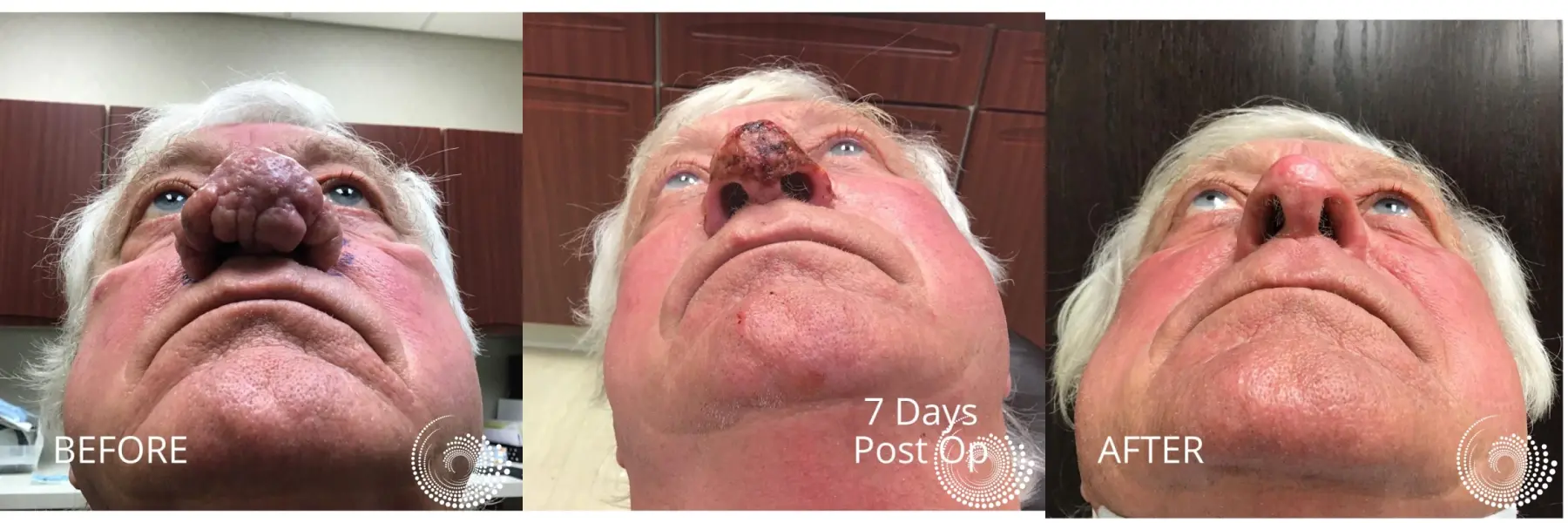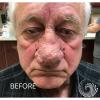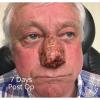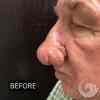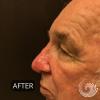
Create a MyFavorites account and save any before and afters you think you might like to use as examples to show us.
Rhinophyma treatment to restore nose
Before
Rhinophyma treatment to restore nose
7 Days After
Rhinophyma treatment to restore nose
8 Weeks After
Rhinophyma treatment to restore nose
This 65-year-old patient wanted treatment for Rhinophyma. Heat Loop Excision was decided as the best method for treatment with the most optimal outcome. As an office visit procedure, taking just over an hour, this choice was also the easiest for the patient.
A 15 blade was used to tangentially debulk excessive rhinophymatous nasal tissue. An electrosurgical cautery unit with a wire loop was used to sculpt and reshape the nose. A hyfrecator was also used for hemostasis. Following the procedure Polysporin ointment and a pressure dressing with telfa were applied. For 2 weeks following the procedure, the patient needed to avoid exercise, heavy lifting, and swimming.
The patient was very pleased with the outcome.
Rhinophyma is a skin disorder that causes the nose to enlarge and become red, bumpy, and bulbous. It is thought to result from untreated, severe rosacea, a chronic inflammatory skin condition that causes facial redness on the nose and cheeks.
It was once believed that rhinophyma was caused by heavy alcohol use, but that is not correct. Rhinophyma occurs equally in people who drink no alcohol and those who drink heavily. The condition can lead to permanent disfigurement if left untreated, and a large bulbous nasal tip can cause nasal obstruction.
Causes of Rhinophyma
The exact causes of rhinophyma are unknown, but certain factors can increase the risk of this rare disorder. These risk factors include:
- Age:Rhinophyma is typically diagnosed between age 50 and 70.
- Gender:Men are more likely to develop the condition than women.
- Complexion:Fair-skinned people are more likely to have rhinophyma.
- Ethnicity:People with an Irish, English, Scottish, Scandinavian, or Eastern European background are at a higher risk.
- Family history:People with family members who have had rosacea or rhinophyma are at a higher risk.
Symptoms of Rhinophyma
Rhinophyma usually develops in more severe cases of rosacea. Its signs and symptoms can occur in cycles and become worse if left untreated. Signs and symptoms that affect the nose include:
- Gradual changes in appearance to a swollen, bulbous shape
- Many visible oil glands
- Enlarged skin pores
- Reddish skin color
- Thickened skin
- Waxy, rough, yellowish surface
How to prevent rhinophyma
There’s no known way to prevent rhinophyma. However, some factors can increase blood flow to the surface of your skin and aggravate rosacea symptoms. Experts recommend avoiding these potential triggers in order to limit flare-ups:
- hot foods and beverages
- spicy foods
- alcohol
- caffeine
- very hot or very cold temperatures
- exposure to sunlight
- emotional stress and anxiety
- strenuous exercise
Experts also recommend a healthy skin care routine for individuals with rosacea regardless of the subtype. This includes:
- regular sunscreen use with SPF 30 or higher and UVA/UVB protection
- sensitive skin or hypoallergenic skin moisturizer
- proper eye care when needed such as artificial tears and safe cleansing
Additional resources can be found on the National Rosacea Society page, the world’s largest support network for those with rosacea.
- Age: Between 56 and 65 years old
- Post-op Timeline: 7 days and 8 weeks
- Technique: Hot Wire Loop Excision
